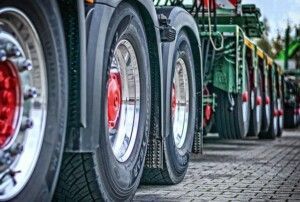Why Consider Options Aside From Gas-Guzzling Trucks?

When it comes to how you get your products from spot A to B, then you might naturally consider trucks to be the first and the most obvious answer. After all, they seem to be the lifeblood of logistics across all sectors. They do bring advantages, as well. But in some cases, there are alternatives worth considering and we’re going to look at why you should do that.
They’re expensive
First of all, let’s address the obvious point first and foremost: trucks are not cheap. Pound for pound, they are some of the most expensive vehicles on the road . They rely on a lot of specialist parts which you may need to repair and replace, which is more expensive than repairing a regular car. What’s more, they consume a lot more fuel, which is another bigger expense. Keeping trucks on the road, especially your own trucks, may also require logistics systems to manage their position and their deliveries, another expense.
They can be dangerous
When it comes to road accidents, some of the most expensive and the most dangerous can revolve around trucks. Truck drivers have a larger blindside than drivers in most other vehicles and any loss of control can be much more severe, harder to correct, and damaging as a result. The law around trucking accidents puts a lot of responsibility around the truck driver and, in your case, perhaps your company. As such, you could be at risk of a big legal payout if one of your drivers gets into an accident.
They might not always be the most efficient method
The reason that people are willing to accept the costs of running trucks for your logistics is that they can often be the most direct and efficient way to get products where they need to go, especially when things have to go from door to door. However, that’s not always the case. If you have access to rail, then that is still by far the most efficient manner of transporting goods. Short sea tripping can be more efficient and less time-consuming, as well. You should consider the route your products typically have to go through and which option is really most efficient.
They’re not the most sustainable option
Of all of the transportation methods, except perhaps air travel, trucks are some of the most inefficient and unsustainable. Trucking requires a lot of fuel to transport goods from A to B. Keep an eye for the trends in sustainable transportation and you might be able to see options that better suit you, such as using rail to get your goods to one area in bulk, where instead of trucks, you might be able to rely on electric vehicle drivers to get your products to the customer’s doorstep, as an example.
Even despite all of the points above, there may well be cases in which trucks still remain your only viable option. If that’s the case, try to choose companies that make efforts to make transport more sustainable.


